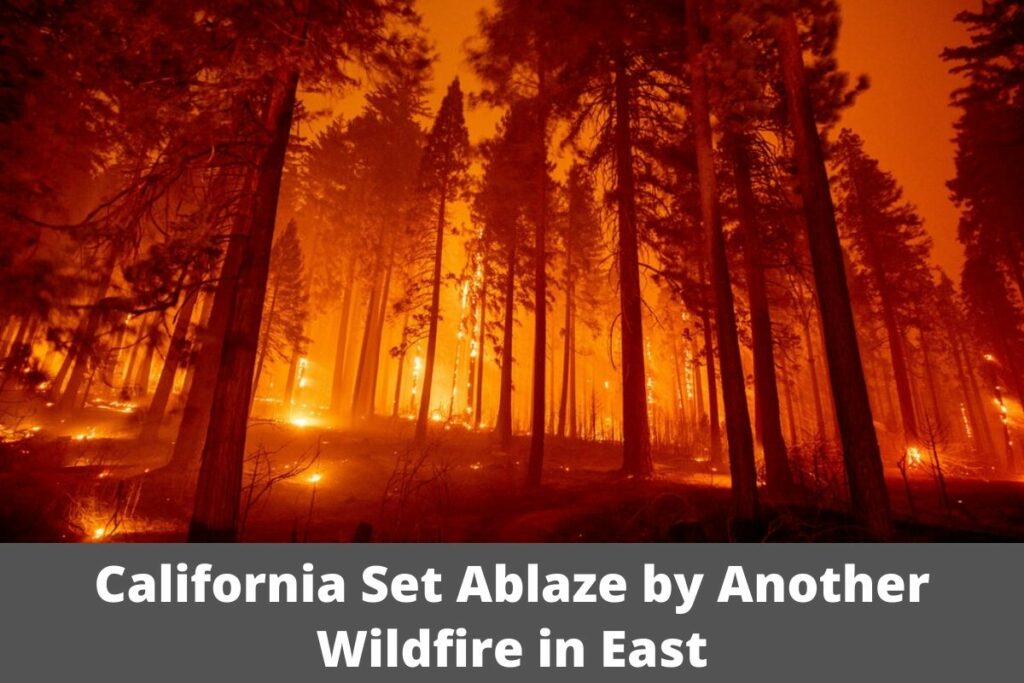The East Coast remains a literal hotspot as another scorching hot fire wreaks havoc in Northern California, injuring at least two civilians and damaging structures, among them an elementary school and a post office.
Despite not being a stranger to wildfires, the state of California is disrupted by the “Caldor” fire, which has notably been active for four days and counting and has burned through around 54,000 acres, prompting the authorities to issue a mandatory evacuation order for a community of 7,000 people in Pollock Pines, which is less 60 miles northeast of the state capital Sacramento.
As the fire has yet to be controlled, the state’s firefighting department, as well as a local gas and electric chain, warns of an elevated fire hazard as a combination of high winds, low humidity, dry ground, and scorching temperatures contribute to this “dynamic and rapidly developing incident.”
The company Pacific Gas and Electric reportedly shut down operations because of the dangers presented by the wildfire, and although the decision was a safety consideration, the power shutdown has reportedly affected around 51,000 customers across 18 counties. PG&E assures customers that they will be notified when the power will be turned back on and provide continuous updates on what to expect.
PG&E has also stated that their meteorologists are tracking the weather system to aid them in making decisions that will keep their customers safe and informed. Most fires in California have no definite causes, although PG&E previously stated that a fuse on one of their utility poles may have sparked a previous fire. This incident and statement remain under investigation.
The Coronavirus pandemic proves to be another blazing issue, as hospitals and evacuation centers are having trouble accommodating fire victims due to full capacity. Medical centers advised fire evacuees who had tested positive for COVID-19 to opt for restorative home treatment if they did not need immediate medical care.
California has suffered at least a dozen fires since July, with four remaining actives as of writing. While the state’s dry landscape contributes to these incidents, California’s fire department Cal Fire refers to climate change as a major accelerator of fire-related incidents citing snowmelt, reduced snowpacks, and warmer temperatures contribute to the intense dry seasons that make the state more vulnerable to wildfires.
Stay tuned with The East County Gazette to get more and the latest news from our expert writers.

